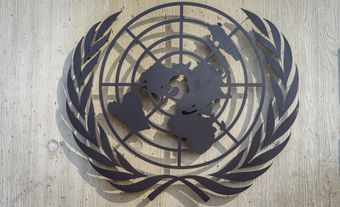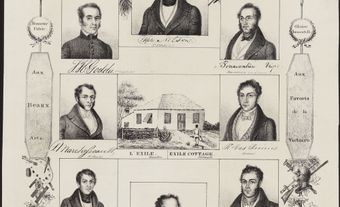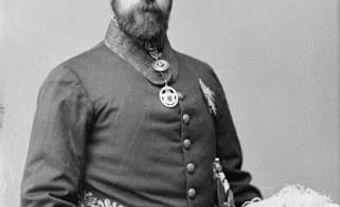This article was originally published in Maclean's Magazine on April 4, 2005
BC to Vote on Electoral Reform
HOW BRUTAL is BRITISH COLUMBIA political life? Consider Liberal Premier Gordon CAMPBELL, who has survived - so far, and notwithstanding a disastrous drunk driving conviction - his first term in office. When he goes to the polls on May 17, he'll be the province's first premier in 22 years who is able, or willing, to seek re-election.
How weird is B.C. political life? Examples are legion, but consider the flukes that marked the past two provincial elections. In 1996, slightly more people voted for the Liberals - 41.8 per cent versus 39.5 per cent for the New Democrats - yet, the NDP won a majority government. This phenomenon political scientists call a "wrong win." In 2001, with a kind of karmic balance, the Liberals won 57.6 per cent of the popular vote to the NDP's 21.6 per cent, enough for a solid majority. Instead, it earned them utter dominion. They grabbed a staggering 77 of 79 seats, reducing the NDP to a rump of just two MLAs. This is known in the political game as an "elected dictatorship."
How satisfactory is B.C.'s electoral system? Check back on May 18. Voters will have gone to the polls the day before in what may be B.C.'s last normal - the word must be used advisedly - provincial election. They will not only choose a government, they'll be asked if they want to trash the electoral system and replace it with a radical form of proportional representation in which the number of seats won by parties or independents matches their share of the popular vote.
B.C.'s binding referendum is a display of people power unprecedented in Canadian history, and a political scientist's wet dream. Not only will voters be asked how they want their ballots counted in the next election in 2009, they'll decide whether to replace the status quo with a system of their own design. The concept, the Single Transferable Vote (STV), is the creation of an assembly of 160 British Columbians randomly selected from the voters' list. It is a variant of models in place in Ireland, Australia and Malta. B.C.'s grassroots revolutionaries - with much public consultation, but unfettered by the elites - designed a system with the potential to marginalize political parties as never before. "Your vote isn't just counted, it actually counts," says Norman Ruff, a political scientist at the University of Victoria and a late convert to STV. "It throws the whole debate over electoral systems toward the individual voter rather than the point of view of parties and MLAs." The very notion leaves the political establishment across the spectrum apprehensive.
The deceptively simple ballot will read: "Should British Columbia change to the BC-STV electoral system as recommended by the Citizens' Assembly on Electoral Reform? Yes/No." Yet ask British Columbians about BC-STV and they're apt to blush, recommend a walk-in clinic and a dose of penicillin. Such ignorance may change after April 19, when the writ drops, and a public information program hits high gear. Electoral reform groups and websites have popped up, and members of the now-disbanded assembly have taken to the road to sell their idea with evangelical zeal.
Shoni Field of Vancouver, now 32, had a six-month-old son and was on parental leave from an environmental non-profit group in 2003, when her name was drawn for the assembly. She jumped at the chance to sacrifice a year of evenings and weekends to the cause. Now, she's a regular at civic meetings, selling STV to voters. Like most on the panel, she was not a political partisan, and had no axe to grind. After 50 public meetings, though, and 1,600 submissions, the message was clear: the status quo had to go. "We very rarely heard, 'I like the current system, it works for me,' " she says. "There's a huge public appetite to try something new; the only barrier is getting the word out."
There's a virulent strain of discontent nationwide with the so-called first past the post system, where the party that wins the most ridings forms the government. In part, that's because the makeup of the legislature, and sometimes even the winning party, rarely reflects the popular vote; and party discipline can often trump local priorities. Two other provinces, Quebec and New Brunswick, have put electoral reform proposals on the table calling for less radical forms of proportional representation. Ontario and Prince Edward Island are also working toward reform. Prime Minister Paul MARTIN called correcting the "democratic deficit" a priority, but his modest proposals are mired in the morass of minority government.
Curiously, it fell to the buttoned-down Campbell, an unlikely radical, to shake things up. Buoyed by his inflated majority, he implemented a number of the reforms he'd campaigned on. Among the most far-reaching: establishing a fixed election date every four years; curbing government advertising in the run-up to campaigns; appointing Gordon Gibson, a one-time Trudeau Liberal and former B.C. party leader, to design a citizen's assembly; and committing to a referendum on any electoral change the assembly thought necessary. Gibson's grassroots approach called on citizen volunteers to become expert in the arcane business of electoral systems.
The assembly rose to the occasion, delivering a result that flat-out surprised most observers - and likely the governing Liberals, too, though they've remained scrupulously neutral so far. "Political parties instinctively don't like it," Ruff says. "STV could only come out of this kind of citizen assembly process because it privileges voter choice." And perhaps it could only come out of B.C., which is known for polarized parties and violent political mood swings. "Right now, one government builds up a policy and the next tears it down," says Field. "People kept saying to us, 'Could we stop with the destructive politics? Let's start building things.' "
A recent poll by Ipsos-Reid showed the Liberals with 46 per cent of decided voters. The NDP, once at death's door, have a solid 39 per cent under Carole James, its personable new leader. Under the current system, Ruff expects that would translate into about 48 Liberal seats, 30 NDP and perhaps a Green Party member. More interesting to him is the referendum. A book he's writing on B.C. politics is on hold, awaiting the outcome.
Changing the system requires a high threshold of support: 60 per cent of the vote province-wide, with at least 48 of 79 ridings in favour. Ruff concedes proponents must overcome "a huge education gap." Yet Field predicts voter discontent will win the day, especially if political elites try to protect their turf. "We're going to hear a lot of 'This system works just fine,' she says. "I hope the citizens say, 'Well, let me be the judge of that.' "
AN STV PRIMER
The Single Transferable Vote system involves a number of complex calculations. Fortunately for voters, Elections B.C. would do the number crunching. Some highlights:
▪ Electoral districts are enlarged to contain from two to seven elected members, depending on riding population.
▪ Each party may run several candidates per riding; individuals compete against political opponents and fellow party members.
▪ Instead of simply marking an X, voters rank candidates in order of preference.
▪ Once voting is completed, Elections B.C. calculates the number of votes (or quota) needed to elect each MLA in a riding.
▪ Everyone's first preference is counted. All candidates reaching the quota are elected.
▪ If a voter's No. 1 candidate gets more votes than needed to win, his or her No. 2 choice is counted, using a weighted formula.
▪ If no one hits the quota, the person with the fewest votes is dropped and the voter's next choice is counted.
See also ELECTORAL SYSTEMS.
Maclean's April 4, 2005

 Share on Facebook
Share on Facebook Share on X
Share on X Share by Email
Share by Email Share on Google Classroom
Share on Google Classroom


